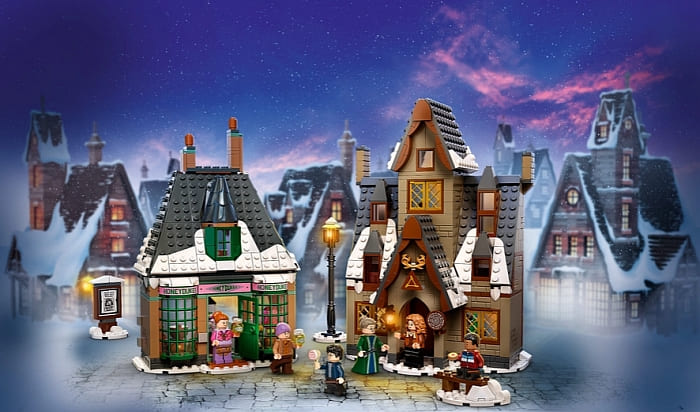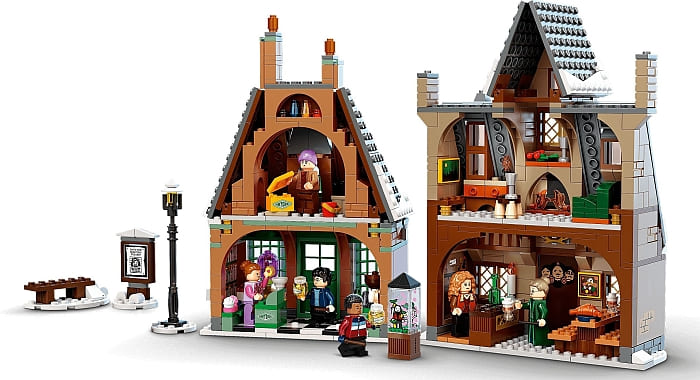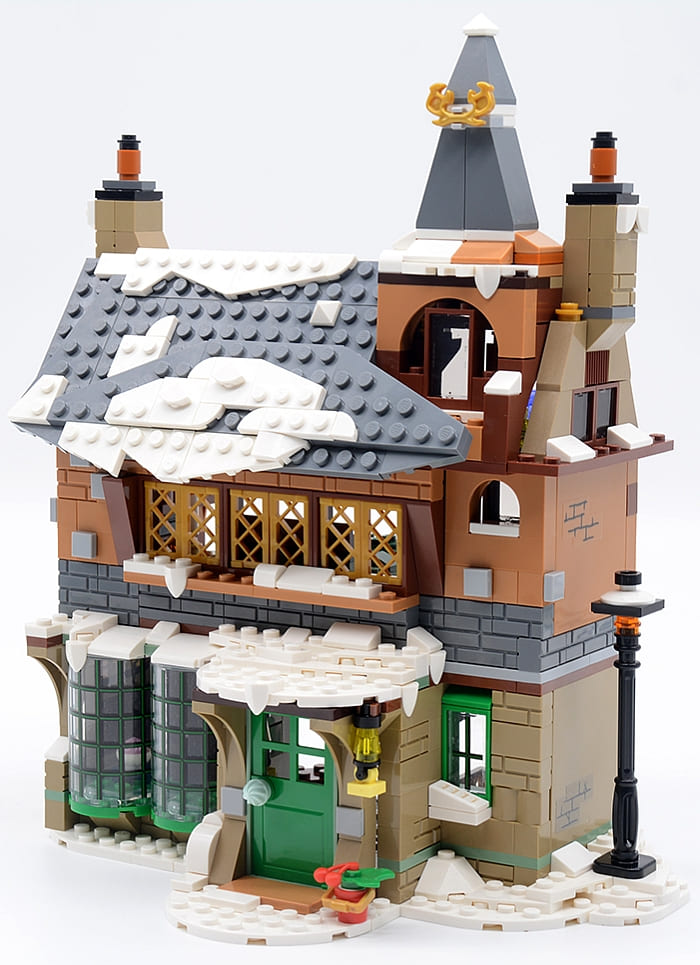(Written by William)
2021 has given us quite a few remarkable LEGO sets. Every time I thought, “Well that’s going to be the best thing ever,” LEGO announced something else interesting. The LEGO City Wildlife Rescue collection contains some of those sets I was ecstatic about… until I got distracted by half a dozen other sets.

The reason for my excitement had to do with all the animals created for the collection. The original elephants LEGO released back in 2003 in the LEGO Adventurers line, command a hefty price on the secondary market, so getting new elephants was a welcome surprise. And the LEGO City Wildlife Rescue line also brings us other animals, including lions… oh my!

LEGO City is usually a good base for younger fans to be introduced into the wider LEGO world. The building techniques aren’t spectacular, but they are solid. Unfortunately, the LEGO City line has a massive problem with crime and fire, which means we see an unusual amount of police and firefighters. So it is practically a treat when LEGO City branches out to do things like exploration, construction, and entertainment. And even the occasional twist on their rescue-themed sets like wildlife rescue.
LEGO sometimes partners with National Geographic for product lines that feature wildlife rescue and exploration. They have done this with the LEGO City Ocean Exploration sets, LEGO City Arctic sets, and LEGO Friends Jungle Rescue sets. Such partnership usually means that the sets are more realistic and really focus on the rescue and exploration aspects. And they also usually come with a nice variety of animals – often brand new mould. Although the LEGO City Wildlife Rescue sets aren’t made in collaboration with National Geographic, they have similar features to some of the collaborative themes.
LEGO CITY WILDLIFE RESCUE – ANIMALS
Let’s face it; most adult builders will only consider these sets for the included animals. From this perspective, the two largest sets make the most sense. They are the #60302 LEGO City Wildlife Rescue Operation, and the #60307 LEGO City Wildlife Rescue Camp. These two sets have the most animals, several of which are exclusive to a single set.

The star of the show for both sets is the adult elephant, and the Wildlife Rescue Camp even includes a baby elephant. It’s been quite some time since we’ve seen large molded animals like this, and as mentioned above, elephants are rare in the LEGO universe (although more common in DUPLO).
Fortunately, they do not disappoint. The adult elephant looks striking in its appearance with movable trunk, tusks (longer in the Wildlife rescue camp and shorter in the Wildlife rescue Operation), and a head that can both tilt up and down and rotate. The adult elephant may not be the most posable animal in the LEGO portfolio, but it feels satisfying. Unfortunately, the baby elephant is one solid piece, but it can hold a bar in its trunk which just looks adorable.

Speaking of solid-piece animals, both sets include two monkeys. They are nowhere near as functional as the first monkey from the old LEGO Pirates line, but I do think they are a bit better than the recent baby monkeys we’ve seen in both the LEGO Collectible Minifigure Series and the LEGO Friends line. Each monkey has a single hand that is reaching out, which does offer some interesting play opportunities. For instance, the Wildlife Rescue Operation comes with a bandage for the hand that fits perfectly on the monkey to show it is hurt and being cared for.
The other animals in the two sets differ. The Wildlife Rescue Operation features a crocodile along with its nest. This is an updated mould with a hinged mouth and a tail that you need to assemble. I think what got me was one of the eggs is printed with a cracked image and a little reptilian eye peeking out.
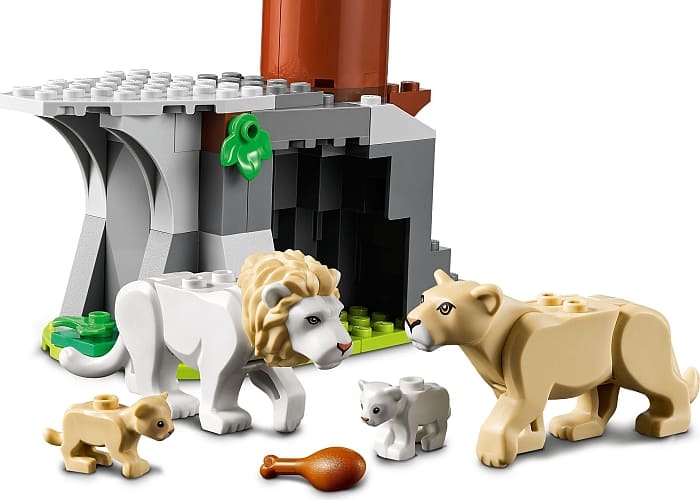
As for the Wildlife Operation Camp set, we get a red and brown eagle with their own egg. I really like the spread wing design since it can be posed in flight. Plus, it is made with hard plastic, unlike the seagulls we’ve seen in other sets that are posed in a similar way. The harder plastic connects more securely to studs.
It’s likely that if you do choose the Wildlife Rescue Camp set, it will be because of the pride of lions. You get two cubs with different coloring, a lioness, and a lion with a full mane. The lioness and lion are both posable with tilting heads and back legs. This feature gives them a very fluid sense of motion when posed correctly.

All in all, both sets offer a fairly robust selection of animals. I do appreciate the fact that each set has something that the other doesn’t, so it doesn’t feel like one is better than the other. Plus, I am happy that there are some differences when there is overlap like with the elephants. This then leads me to the next serious question: how well do these two sets connect with one another?
LEGO CITY WILDLIFE RESCUE SETS – CONNECTIVITY
In years past, when LEGO created a themed line, they always walked a very careful balance. They wanted sets that could stand on their own, but also could work together in a narrative sense. This meant the more you had, the more story options you were able to enjoy. However, it was rare for the sets to actually connect together unless you did it yourself.

That’s not to say LEGO never tried this. In fact, one of my favorite castle lines from Lion Knights had various castle-themed buildings that all had a castle wall that could connect with the other units. And I think a major part of the LEGO Modular Expert buildings is the fact they can form a unified street. But generally, a themed line can’t really rely on this connectivity.
The main reason for this is that you need something in common to really base the connectivity around for it to work. In the case of the old LEGO Castle line, it was the outer castle wall that served as a touchstone for the sets. As for the LEGO Modular buildings, it is the presence of the sidewalk and gutters that help tie the structures together. And in some of the newer LEGO City sets, it has been the road-plates that provide this unique characteristic.
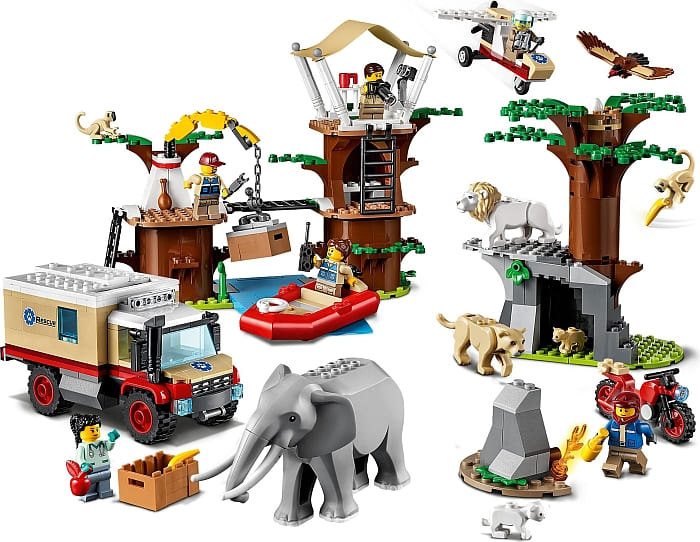
Notice though that these are all man-made structures. The wilderness is too unorganized to have anything like that, right? At least that’s what I thought until I built the LEGO City Wildlife Rescue sets. Here, LEGO designers simply recolored the LEGO City road-plates, in colors like dark-azure, and bam, instant waterway. The funny thing is, if you look at history, there is a very good reason why cities, towns, and life in general popped up around sources of water. Not only are they a necessity for life, but they are in essence nature’s roads.
If I wasn’t a fan of the new road plates before, this solidifies why I like them so much. Normally, I’d maybe mix and match these sets together on some large baseplates and create a natural setting. But thanks to this new modular plate system, I can directly connect them together making a seamless transition.
LEGO CITY WILDLIFE RESCUE SETS – FINAL THOUGHTS
It is easy to say that the LEGO City Wildlife Rescue sets are fancy animal packs. Sure, the building techniques are nothing special. With an age rating starting at 6+, there shouldn’t be anything too tough to put together, and the vehicles make sense, are sturdy, and are built for fun. Additionally, the sets include a great number of minifigures to operate all the bases and vehicles.

Just between the two largest sets, there are a total of six different vehicles. The ground vehicles consist of a motorcycle, a hauling vehicle with treads, and a research truck with a lab. The air vehicles consist of a small powered airplane perfect for surveying, and a pretty hefty helicopter suited for airlifting cargo. And you even get a raft for water travel. If this is a rescue operation, it is certainly well funded!

Price-wise, expect to pay the same as for the LEGO Jurassic Park set. I know that the LEGO City Wildlife Rescue sets do not have intellectual property attached to them, but the specialized moulds like the elephants and lions do add up. And the sets utilize some bigger pieces to fill in the scene, so once everything is assembled, they do feel extensive and fairly priced. (This is why it may boast a lower part count to similarly priced sets.)

Unlike other LEGO City sets, this line does have something for everyone. Those that love minifigures and animals are going to be on the receiving end of a major slew of them in these sets. And even the collectors and resellers can be assured animals like the elephants and lions will keep these sets in demand for years to come. I think the only LEGO fans that these sets are not really for are those looking for a building challenge. The building experience here is aimed at a much younger audience. Although I do think some of the parts included in the sets are quite useful. Ultimately, after building these two sets, the rest of the LEGO City Wildlife Rescue collection got raised a bit higher on my wanted list. In the video below, I will summarize some of my thoughts on the sets, and if you want to check them out, they are available at the LEGO City section of the Online LEGO Shop.
What do you think? How do you like the LEGO City Wildlife Rescue sets? Do you have any of them already? Or are you planning to get them? What do you think of the animals and other features? Feel free to share your thoughts and discuss in the comment section below!
And you might also like to check out the following related posts:
